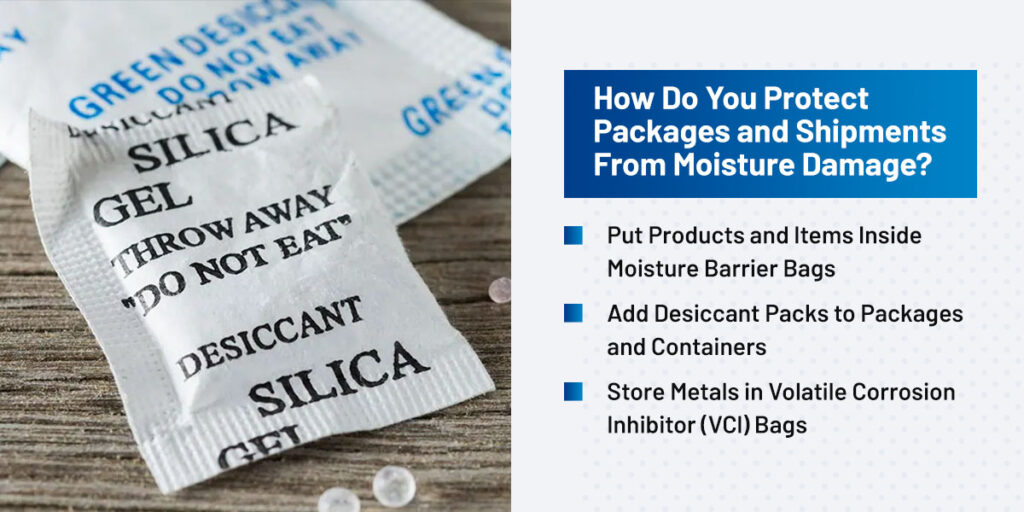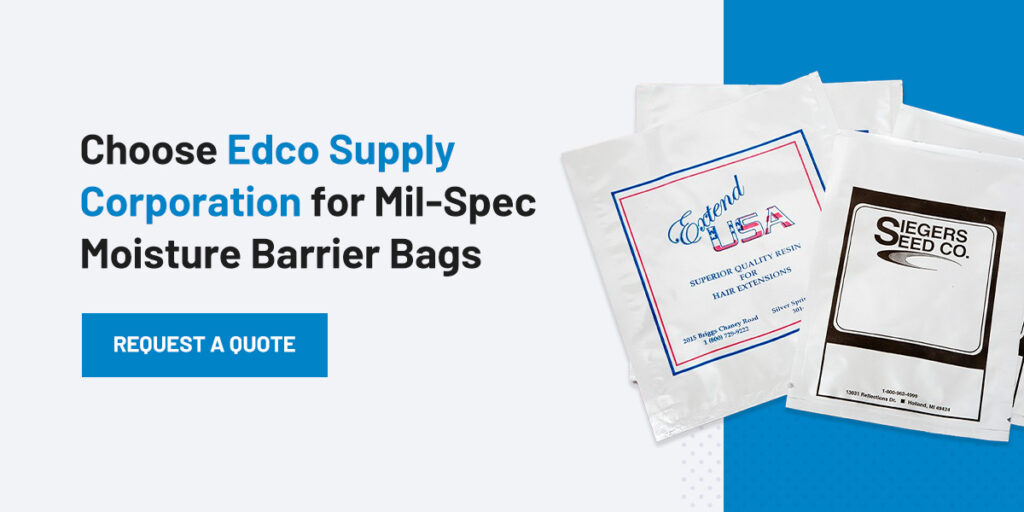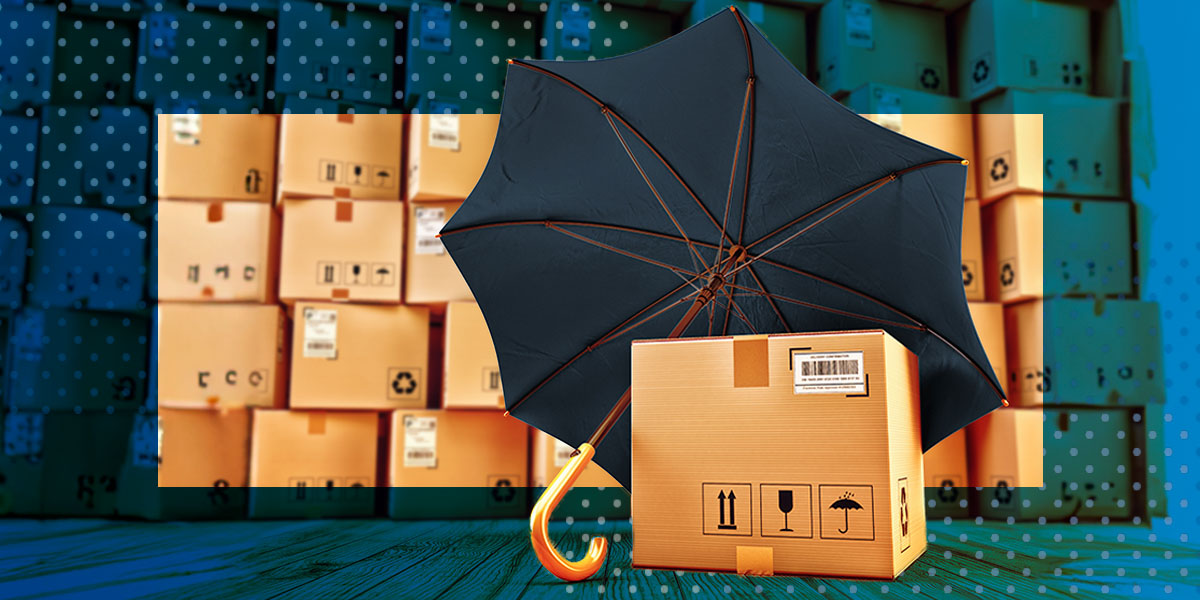Water is one of the main elements that can damage packages while they are being shipped or delivered. It can damage the packaging in which products are placed as well as the actual product en route to its destination.
It’s important to plan ahead and use packaging that will keep products safe from moisture damage and condensation in a sealed container. This moisture damage protection guide will help your business keep its products safe during transit and avoid water damage to both packaging and products. Consider the various conditions and containers your items are placed in, and take into account how these factors can affect what’s inside.
Why Does Water Damage Happen?
There are a number of factors that can cause water damage when shipping and delivering packages and products. From bad weather to accidents, these situations can affect the integrity and usability of what’s being shipped. Here are some of the reasons why water damage can occur:
- Humidity: High humidity levels refer to a high amount of moisture in the air. In shipping containers, the temperatures often fluctuate, causing condensation that can damage or corrode products and electronics.
- Rain: If products are exposed to bad weather such as rain, floods or storms, there is a possibility that they can become damaged if they are not in watertight packaging.
- Water leaks in shipping containers: A leak in a delivery truck or shipping container creates an entryway for water to seep through and damage products.
- Damaged packaging: If packages sustain some form of damage during the production or delivery processes, water can penetrate the package and damage what’s inside.
- No moisture barrier protection: Lack of adequate packaging increases the chances of products becoming damaged by water. Even with proper care, humidity and rain can cause damage that moisture protection solutions could have prevented.
- Lack of ventilation: When there is no cool air that steadily circulates through a container, it can create condensation that can cause products and packages to “sweat.”
Water damage can negatively affect various types of products. Materials that are not water-resistant have a chance of breaking or losing some form of functionality. Here are some of the negative effects of moisture damage:
- Corrosion: Electronic and metal products such as phones can corrode when exposed to moisture. Even a small amount of moisture creates rust that will cause electronics to short circuit, malfunction or break.
- Mold: Water damage can result in mold and mildew forming on various fabrics and materials.
- Peeling labels: Instruction labels on packaging can peel off or become unreadable when they encounter moisture. This degradation can be dangerous if the contents contain toxins or hazardous materials.
- Warped products: When exposed to high water levels, products can warp or lose their shape. This weakens the structure of the products, which can increase breakage.

How Do You Protect Packages and Shipments From Moisture Damage?
You might not be able to control the moisture in shipping containers. However, you can limit the potential risk of water damage with the right packaging and components. Moisture barrier solutions can help maintain the integrity of the package, and ensure customers receive their product intact and in peak performance.
Here are a few ways you can protect packages from shipping container condensation and moisture damage.
Put Products and Items Inside Moisture Barrier Bags
One of the most effective methods to prevent water damage is to place products in moisture barrier bags. Also known as vapor barrier bags, this packaging can safeguard your products against condensation, water leakage and humidity. This protection reduces the chance of corrosion, mold and contamination that can affect product quality.
Moisture barrier bags are made from a variety of materials such as asphalt-coated paper, polyethylene and paper-backed aluminum. You can put a variety of different products in moisture barrier bags. These include electronics, food items, chemicals, pharmaceutical products or anything else you need to protect from moisture and humidity.
In addition, custom options allow you to print your logo and colors on vapor barrier bags to align with your brand and product packaging.
Add Desiccant Packs to Packages and Containers
Remove any moisture from your packages using a desiccant pack. Desiccant packs absorb moisture from the air in the packaging as well as odors and other chemicals. They are ideal for placing in packages along with items like medicines, electronics and food products.
You can use a few types of desiccant packs to keep products free from moisture, mold and corrosion, including:
- Silica gel: The most common desiccant pack is made from silicon dioxide, which is a naturally occurring mineral. It can withstand higher temperatures and is reusable. Silica gel can absorb almost half of its weight in water without expanding.
- Bentonite clay: Bentonite clay is made from a natural mineral. This cost-effective option is highly absorbent and effective against corrosion, but cannot withstand high temperatures like silica gel can.
- Calcium sulfate: Made from dehydrated gypsum, this desiccant is non-toxic, non-corrosive and chemically stable. It can take on up to 10% of its weight in water and withstand high temperatures.
- Calcium oxide: This option, which is also called quicklime, has the ability to absorb a significant amount of moisture even in low humidity levels. The best application for calcium oxide is dehydrated foods.
- Molecular sieve: These are designed to absorb molecules of a specific size, and for that reason they are among the more expensive desiccant options. Made from synthetic crystalline aluminosilicates, the sieve can be created with a specific pore size to attract molecules of the same size. They are ideal for biochemical packaging and reagents.
Store Metals in Volatile Corrosion Inhibitor (VCI) Bags
Metals that sustain water damage are prone to oxidation, which can lead to rust and corrosion. A VCI bag is a great way to keep metals and electronics safe from moisture, humidity and oxygen that can corrode your products. VCI bags are chemically treated, which acts as a coating that protects products.
VCI bags can be used in various industries including automotive, aerospace as well as metal and steel. Place your items in the bag and close it tightly to prevent shipping container condensation and moisture from entering the bag. VCI bags can safeguard items against moisture for long periods of time, even up to five years depending on environmental factors.

Choose Edco Supply Corporation for Mil-Spec Moisture Barrier Bags
Protect your products and packaging during transit using moisture barrier bags from Edco Supply Corporation. We also provide military-specification desiccants and VCI bags to resist water damage and corrosion and maintain product functionality and quality.
As a supplier of military specification packaging, we can meet your requirements for custom packaging solutions. Request a quote or contact us online today.


